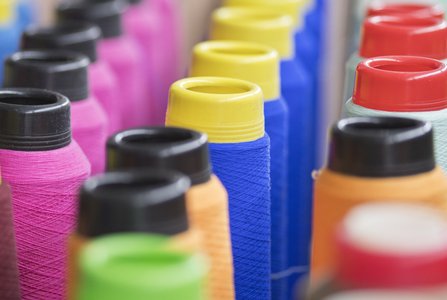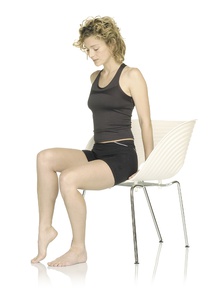As in the case of fine women’s tights or stockings, fine support stockings, such as Gilofa Style, are measured in den. However, medical compression stockings, such as Memory or Lastofa, have different measurement units: mmHg or kPa. We will explain what the two units mean and what the difference is.
Meeting the highest demands: the RAL Quality Seal
For medical compression stockings to be prescribed by a physician and to be subsidized by the sickness funds, they must comply with different product standards. The RAL quality seal 387/1 (for compression of the leg) and 387/2(for compression of the arm) for example guarantee the medical efficacy of compression products. To be able to carry the quality seal, the products are subject to regular quality tests.

Medically effective due to controlled pressure
Medical compression stockings have a controlled graduated pressure distribution, which is strongest at the ankle and decreases upwards along the leg in the direction of the heart. The graduated pressure supports the venous return of the blood as well as lymphatic drainage. For medical efficacy the graduated pressure distribution must comply with specific guidelines.
The pressure exerted externally on the leg is measured either in kPa or mmHg. MmHg means millimetres of mercury (Hg = mercury) and is used in EU member states and Switzerland to measure the pressure of body fluids, such as eg blood pressure. It goes back to a time when pressure was measured by means of a mercury column. As in the case of a thermometer or barometer, the mercury column rises along a scale measured in millimeters when external pressure increases. With medical compression it involves the pressure externally exerted by the stockings on the leg.
As mmHg is not common in all countries, kPa is also often used as a unit of measurement. KPa stands for kilopascal and describes the pressure exerted on a surface. KPa is widely used internationally as a unit of pressure and also measures eg the tyre pressure of cars.

Four classes for the correct pressure
The compression class describes the pressure level of a compression stocking in the ankle area. Compression stockings are divided into four compression classes (ccl), whose pressure is prescribed within exact parameters: from ccl I with light pressure to compression class IV with very strong pressure.
| Compression Class | Compression Strength | Compression in kPa | Compression in mmHg |
|---|---|---|---|
| I | light | 2,4 to 2,8 | 18 to 21 |
| II | medium | 3,1 to 4,3 | 23 to 32 |
| III | strong | 4,5 to 6,1 | 34 to 46 |
| IV | very strong | 6,5 and higher | 49 and higher |
Compression in mmHg
It is generally accepted that the more severe the disorder, the higher should also be the compression class prescribed. However, there is not always a strict correlation between compression class and diagnosis.
What the pressure level should be is always dependent on the symptoms and the personal situation of the patient. In the case of patients who cannot put on stockings of the higher compression classes for perhaps psychological reasons, better results may well be achieved by switching to a lower compression class. The final decision will always rest with the physician who writes out the prescription.

Light to strong support as a preventive measure
While the pressure of medical compression stockings is measured in mmHg or kPa, a different measurement unit applies to support stockings. The fineness of a yarn is measured within the textile industry in denier (den).
The measurement unit denier dates back to the French silk industry where denier was used as a measurement of weight (1 den = 1 gramme per 9,000 metres). In the case of a fine pair of tights with 70 den, a yarn thread of 9,000 metres eg weighs 70 grammes. Today it is held that the lower the den number, the finer and the more transparent the knitted fabric, and the stocking is the more opaque, the higher the den number.
The den number not only says something about the fineness, but at the same time about the level of support the stocking provides. Also the fine support stockings Gilofa Style support venous function. Stockings with 70 den provide a light, stockings with 140 den a medium and stockings with 280 den a strong level of support.
Support stockings are solely a preventive measure – they are not suitable for the treatment of vein problems. That is why they cannot be prescribed by a physician. Learn here more about the difference between support stockings and medical compression stockings.




